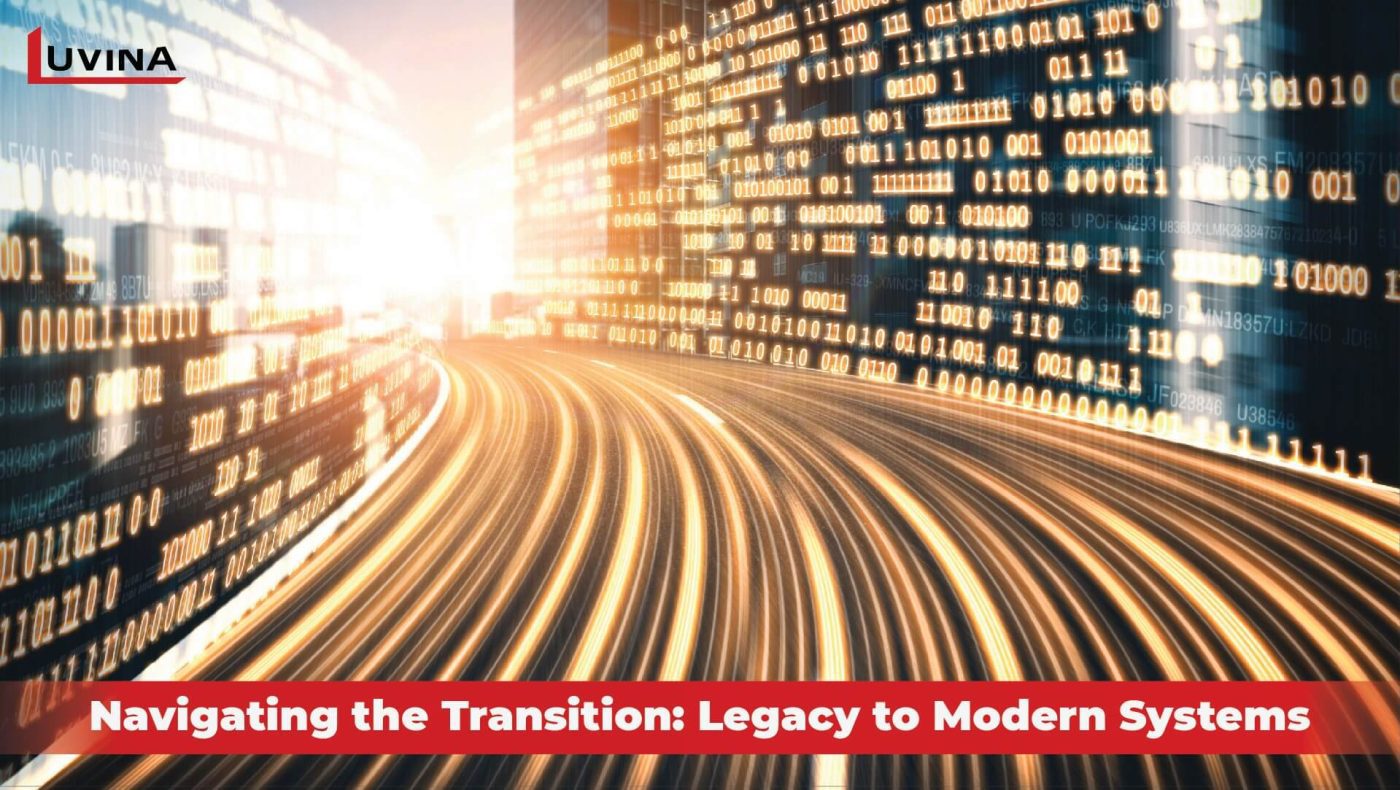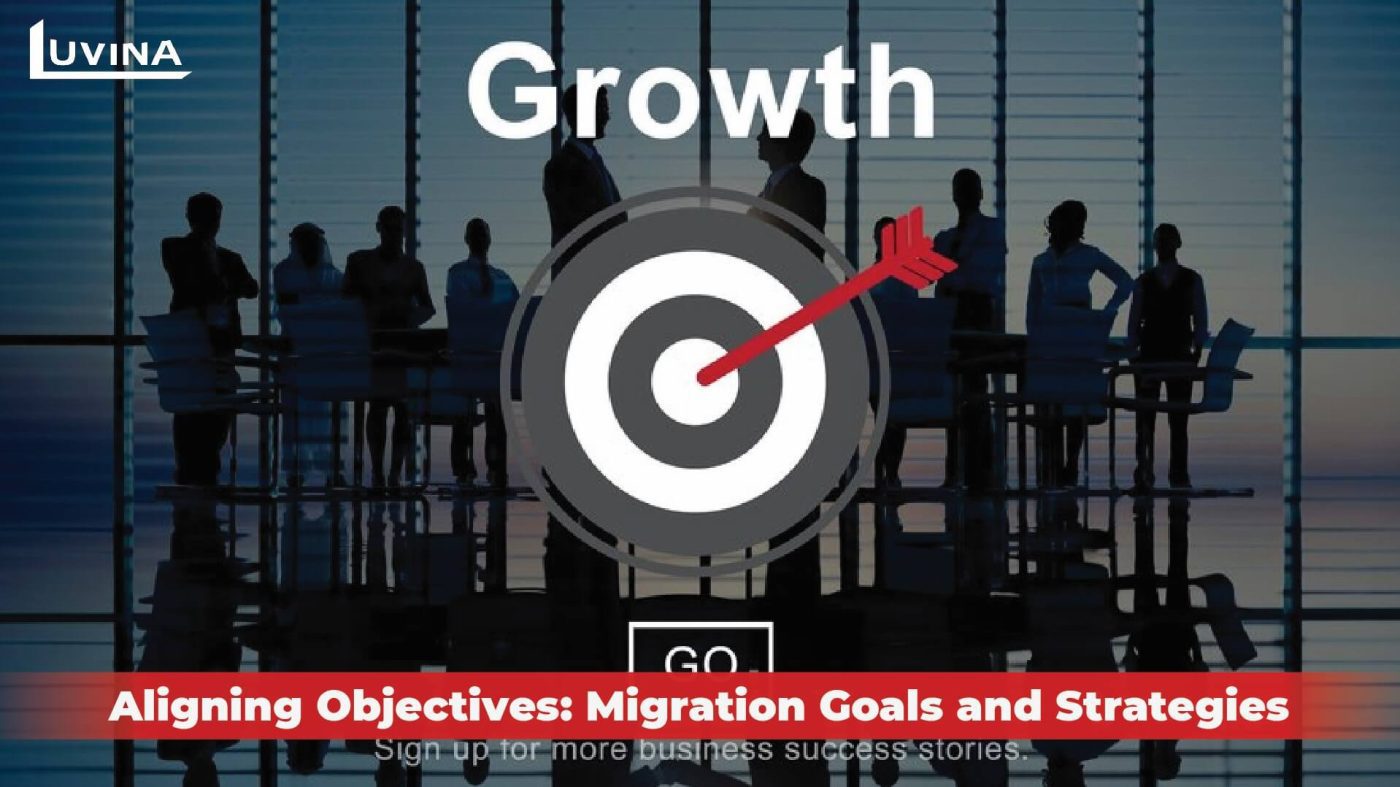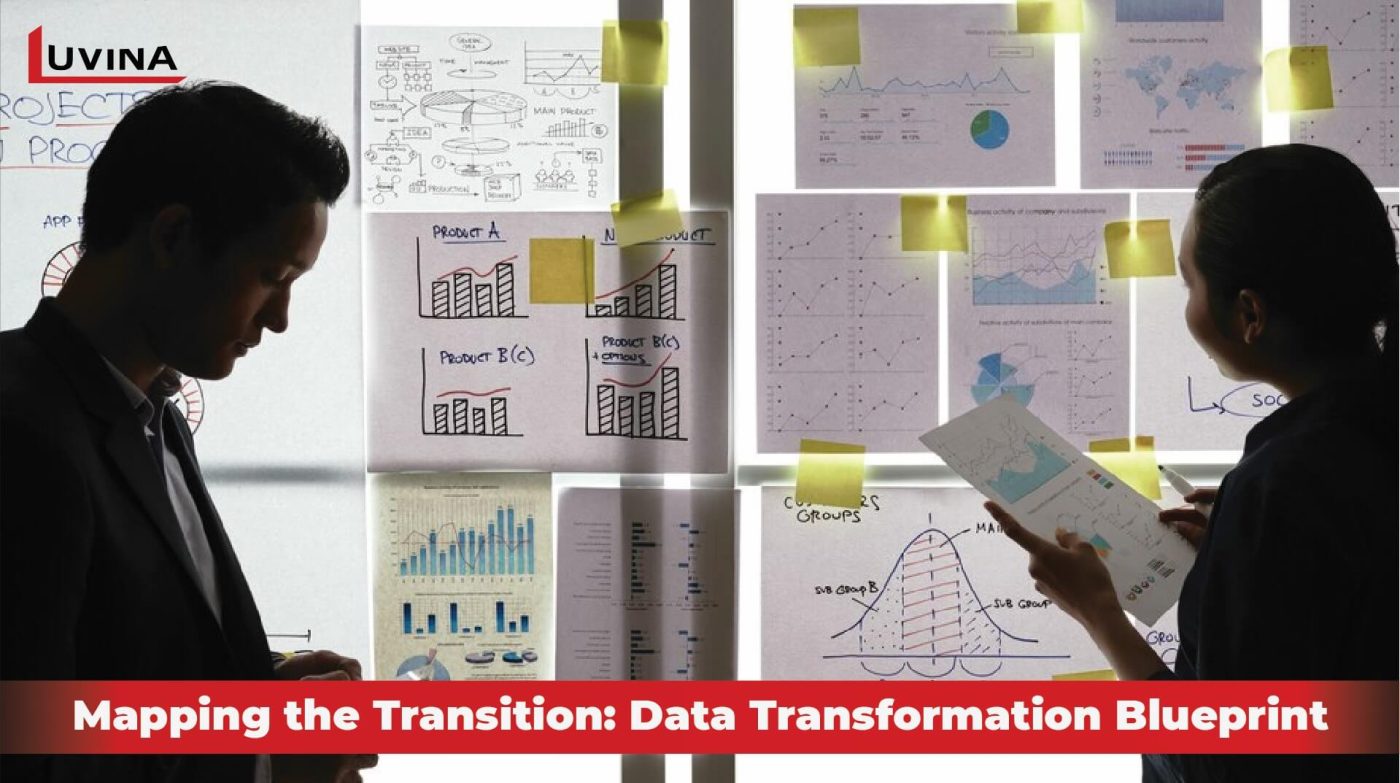Embarking on the journey of migrating data from legacy systems to contemporary platforms is a pivotal undertaking for businesses seeking to modernize their operations. However, this process entails meticulous planning, precision, and a strategic approach to ensure a seamless and error-free transition. Each step in this transformative process holds significant weight, demanding attention to detail and a thorough understanding of the data being migrated. In this comprehensive guide, we delve into the intricate steps involved in data migration, offering a detailed, step-by-step roadmap to facilitate a successful and efficient transition from legacy systems to modern platforms. Let’s navigate through the crucial stages of this transformative journey, ensuring a smooth and accurate migration that paves the way for enhanced operational efficiency and innovation.

Steps to Excel Data Migration from Legacy Systems
Step 1: Assess the Current Data Landscape
A thorough understanding of the existing data landscape is vital for successful data migration. This involves meticulously cataloging all data sources, formats, structures, and interdependencies within the legacy systems.
Key Tasks:
– Inventory and Analysis: Map out all data repositories, including databases, files, and applications, documenting each data format meticulously.
– Dependency Mapping: Recognize relationships between different data sets to ensure no critical linkages are overlooked during migration.
– Data Profiling: Analyze data content, quality, and characteristics to identify and address any anomalies or inconsistencies.
– Impact Analysis: Assess potential effects on business processes and systems relying on this data to mitigate disruptions.
A comprehensive understanding of the existing data landscape forms the groundwork for an effective migration strategy, ensuring a smoother transition to modern platforms while safeguarding data integrity.
Step 2: Define Migration Goals and Strategy
Following the assessment of the current data landscape, the next critical phase involves establishing clear migration goals and devising a robust strategy that aligns with overarching business objectives.

Key Actions:
– Set Objectives: Articulate migration goals aligned with broader business objectives. Establish measurable key performance indicators (KPIs) to gauge migration success, focusing on improvements in efficiency, accessibility, or infrastructure modernization.
– Choose Migration Approach: Decide between a one-time migration or a phased approach based on system complexity, data volume, and operational requirements.
– One-time Migration: Suitable for smaller datasets or when brief downtime is acceptable during the transition.
– Phased Migration: Gradual transition segments data based on priority, minimizing disruption and allowing thorough testing at each stage.
– Risk Assessment and Contingency Planning: Identify potential risks like data loss or system downtime and develop mitigation strategies to address unforeseen challenges.
– Engage Stakeholders: Collaborate with IT teams, business analysts, end-users, and relevant stakeholders to ensure alignment between migration strategy and business needs.
Significance:
Establishing clear migration objectives, choosing an appropriate approach, assessing risks, and engaging stakeholders form the groundwork for a successful migration. This meticulous planning ensures alignment with organizational goals, minimizes risks, and lays the foundation for a seamless transition to modern platforms.
Step 3: Data Profiling and Cleansing
Ensuring high-quality, accurate, and consistent data is crucial for a seamless migration to modern platforms. Data profiling and cleansing are pivotal steps in preparing data from legacy systems for error-free migration.
Data Profiling:
– Quality Assessment: Analyze data quality metrics to evaluate completeness, accuracy, and consistency.
– Pattern Recognition: Identify recurring patterns, outliers, or irregularities in the data.
– Relationship Analysis: Understand dependencies and relationships between different data entities.
Data Cleansing:
– Error Correction: Rectify inaccuracies, missing values, or typographical errors.
– Standardization: Ensure uniformity in data formats, units, and naming conventions.
– Deduplication: Remove duplicates or redundant entries to maintain data integrity.
Thorough data profiling and cleansing ensure high-quality, consistent data for migration. This preparatory phase minimizes the risk of carrying over issues from legacy systems, facilitating a smoother transition and preserving data integrity throughout the migration process.
Step 4: Select Migration Tools and Technologies
Selecting the appropriate tools and technologies is crucial for a successful data migration process. This involves identifying tools that align with migration requirements, system architectures, and compatibility considerations.

Assessing Migration Requirements:
– Evaluate migration scope, data volume, and complexity to understand necessary tool functionalities for an efficient transition.
Choosing Migration Tools:
– Consider compatibility with legacy systems, data formats, and scalability when selecting tools.
– Types include ETL Tools (e.g., Informatica, Talend), Cloud-based Migration Services (e.g., AWS Database Migration Service), and Specialized Migration Software.
Tool Selection Considerations:
– Ensure scalability and compatibility with both legacy and target systems.
– Prioritize tools with robust data security measures and user-friendly interfaces with adequate vendor support.
Careful evaluation and selection of migration tools streamline the process, reducing complexities and mitigating migration risks. The right tools contribute significantly to a smooth transition to modern platforms, ensuring the success of the migration project.
Step 5: Plan Data Mapping and Transformation
As the data migration progresses, meticulous planning for data mapping and transformation becomes essential. This step involves establishing a blueprint for mapping data fields and defining transformation rules to ensure compatibility between the legacy and target systems.
Data Mapping:
– Establish clear correlations between data elements in the legacy and target systems to accurately transfer and interpret data.
– Field-to-Field and Structural Mapping ensure alignment between systems, maintaining data integrity.
Transformation Rules:
– Define rules to accommodate changes in data formats and ensure compliance with the target system’s requirements.
– Include rules for format conversion, data cleansing, standardization, and value mapping to suit the new system.
Types of Transformation Rules:
– Data Format Conversion: Align data formats (e.g., date formats) with the target system’s requirements.
– Data Cleansing and Standardization: Ensure data consistency and accuracy through cleansing and validation.
– Value Mapping and Derivation: Map or derive new values based on predefined rules for compatibility.
Mapping and Transformation Documentation:
– Detailed documentation of mapping decisions and transformation rules serves as a reference guide for the migration team.
– Ensure that stakeholders have a clear understanding of the mapping and transformation processes.
Meticulous planning of data mapping and transformation lays a clear roadmap for transitioning data between systems. This strategic step ensures accurate interpretation and transformation of data, facilitating a smooth migration while preserving data accuracy and consistency.
By strategically planning data mapping and transformation, organizations ensure a seamless interpretation and transformation of data to suit the requirements of the target system, facilitating a successful migration process.
Step 6: Perform Test Migrations
Conducting test migrations is crucial before executing a full-scale data migration. This step allows organizations to validate the migration process, identify potential issues, and ensure accuracy in a controlled environment.
Prototype Migration:
– Select a representative subset of data from the legacy system and migrate it to the target environment.
– Verify the accuracy of migrated data, assess functionality, and evaluate performance metrics.
Key Aspects of Prototype Migration:
– Accuracy Assessment: Compare migrated data with the source to ensure precision in data transfer.
– Functional Testing: Evaluate data functionality in the target system against expected standards.
– Performance Evaluation: Measure migration speed and system responsiveness for optimization.
Iterative Testing:
– Refine migration strategies based on results and feedback from the prototype migration.
– Make necessary adjustments to enhance the migration process and address any identified issues.
Refinement and Validation:
– Rectify discrepancies or shortcomings to streamline the migration process.
– Validate migration processes, mapping strategies, and transformation rules for a seamless transition.
Through test migrations, organizations can minimize risks, validate migration strategies, and proactively address potential issues. This iterative testing approach ensures a smooth transition to the new system while safeguarding data integrity and minimizing disruptions.
The iterative testing of migrations is pivotal to fine-tuning the process, ensuring a successful and efficient transition to modern platforms.
Step 7: Execute Full-Scale Migration
Executing the full-scale migration process is the pivotal phase that transitions data from legacy systems to the new platform.
Backup Data:
– Ensure a comprehensive backup of all legacy data to mitigate potential risks during the migration process.
Perform Migration:
– Transfer data from legacy systems to the target platform following predefined migration strategies, mapping rules, and transformation guidelines.
– Monitor the migration progress, validate data accuracy, and promptly address any encountered issues.
Key Elements of Full-Scale Migration:
– Execute the migration process using chosen tools or technologies effectively.
– Constantly monitor and validate data integrity throughout the migration process.
– Address errors or issues encountered during migration promptly.
Verification and Validation:
– Thoroughly verify migrated data to ensure accuracy, completeness, and consistency in the new system.
Post-Migration Verification:
– Perform functional testing to confirm seamless operation of migrated data within the new system.
This meticulous execution phase ensures a seamless transition, preserving data integrity and operational continuity in the new environment.
The full-scale migration phase is critical, marking the successful transition to modern platforms while safeguarding data integrity and operational stability.
Step 8: Validate and Verify Data Integrity
Ensuring the integrity, accuracy, and quality of migrated data is crucial post-migration. This phase involves rigorous validation and verification processes to confirm that the data transferred from legacy systems aligns with predefined criteria and business rules in the new environment.

Data Validation:
– Confirm accuracy, completeness, and consistency of migrated data against predefined criteria.
– Verify data accuracy by comparing with legacy system data and ensure all expected elements are migrated without omissions.
Quality Assurance:
– Conduct comprehensive checks to ensure uniformity, conformity with system requirements, and data completeness.
– Assess the reliability and completeness of migrated data for its intended use in the new environment.
Error Identification and Rectification:
– Address any identified inconsistencies, errors, or discrepancies through data cleansing or adjustments for accuracy and consistency.
By meticulously validating and verifying migrated data, organizations ensure its reliability and accuracy for supporting business operations and decision-making in the new environment.
This rigorous verification process post-migration establishes data integrity, ensuring reliable data utilization in the modern system.
Step 9: Transition and Post-Migration Support
The final phase encompasses transitioning to the new environment and offering ongoing support for a smooth adaptation to the modern platform.
System Cutover:
– Verify the readiness of the new system and ensure all necessary data and functionalities are accessible.
– Communicate cutover timelines and procedures to users, preparing them for any changes during the transition.
Post-Migration Support:
– Conduct user training to familiarize them with the new system’s features and workflows.
– Provide prompt troubleshooting assistance and gather user feedback for continuous improvement.
Continuous Support and Monitoring:
– Offer ongoing assistance and monitor the system to address emerging challenges or optimize user experience and performance.
Facilitating a smooth system cutover and comprehensive post-migration support ensures a seamless transition and user adoption of the new environment, enhancing operational efficiency and user satisfaction. This phase focuses on optimizing operations and user satisfaction in the modern platform.
>> See more: Legacy Software Modernization: Deep Dive into Mainframe
Step 10: Monitor and Optimize
After the successful transition, continuous monitoring and optimization maintain system performance and refine processes for efficiency.
Monitoring:
– Regularly check data integrity and performance metrics to ensure reliability.
– Analyze user feedback to understand experiences and identify areas for improvement.
Optimization:
– Resolve issues promptly and refine processes based on performance metrics and user feedback.
– Enhance system performance and scalability through strategic optimizations.
Continuous Improvement:
– Embrace a culture of continuous improvement by leveraging monitoring insights and user feedback for iterative enhancements.
Continuous monitoring and strategic optimization efforts post-migration ensure the new system operates at peak performance, addressing emerging issues, and evolving to meet business needs effectively.
Step 11: Documentation and Reporting
Thorough documentation and comprehensive reporting post-migration are essential for recording the details of the migration process, outcomes, and performance metrics. This phase ensures a repository of valuable information for future reference and continuous improvement.
Documentation:
Creating and maintaining detailed documentation encompassing every aspect of the migration process is crucial. This documentation serves as a comprehensive record of methodologies, strategies, data mappings, transformations, validation procedures, and any modifications made during the migration.
Key Components of Documentation:
– Methodologies and Strategies: Document the approaches, tools, and techniques used for data migration, transformation, and validation.
– Data Mapping and Transformation Rules: Record the mapping schemes, transformation rules, and any adjustments applied during the migration process.
– Validation and Verification Results: Detail the outcomes of data validation, verification procedures, and any corrective actions taken.
Reporting:
Generating reports that encapsulate the migration outcomes, performance metrics, and lessons learned is essential for future reference and for extracting insights to enhance future migration endeavors.
Elements of Migration Reports:
– Migration Outcomes: Summarize the success metrics, including data accuracy, completeness, and system readiness post-migration.
– Performance Metrics: Provide detailed insights into system performance, highlighting areas of improvement and successes achieved.
– Lessons Learned: Document experiences, challenges, and best practices observed during the migration for future reference and improvement.
Importance of Documentation and Reporting
– Knowledge Repository: Serves as a repository of information for reference by stakeholders, IT teams, and for future migration initiatives.
– Continuous Improvement: Extract insights from documentation and reports to identify areas for improvement in subsequent migrations.
– Compliance and Auditing: Documentation and reports serve as evidence for compliance requirements and auditing purposes.
Knowledge Transfer and Future Reference:
The documentation and reports compiled post-migration facilitate knowledge transfer within the organization and serve as a valuable reference for future migrations. They aid in streamlining similar migration processes and guide decision-making for upcoming initiatives.
By maintaining comprehensive documentation and generating detailed reports post-migration, organizations can derive valuable insights, facilitate knowledge transfer, and enhance future migration endeavors based on the experiences and lessons learned.
The meticulous documentation and insightful reporting post-migration not only serve as a knowledge repository but also as a guide for future migration initiatives, fostering continuous improvement and informed decision-making within the organization.
Seamless Migration Process
Risk Mitigation & Data Security
Post-Migration Support & Optimization

Conclusion
By following these steps, organizations can achieve successful data migration from legacy systems to modern platforms. Careful planning and execution at each phase minimize disruptions and ensure maximum data accuracy. This structured approach not only facilitates a seamless transition but also sets the groundwork for leveraging the potential of modern platforms while safeguarding the integrity of valuable data assets.








Read More From Us?
Sign up for our newsletter
Read More From Us?
Sign up for our newsletter